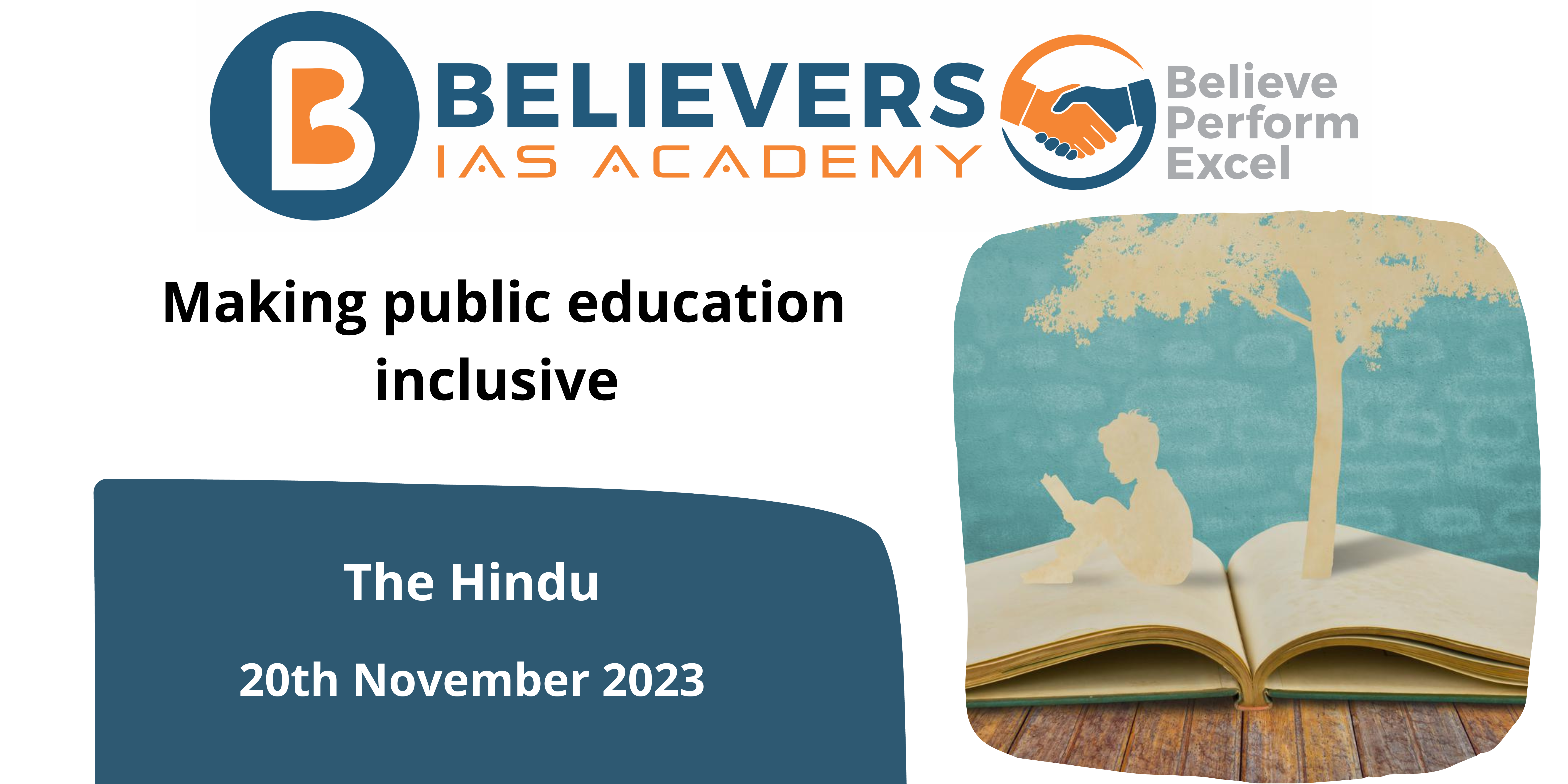Making public education inclusive
Context:
The Odisha government recently has embarked on a transformative journey to revitalize the public education sector through its initiatives like the Odisha Adarsha Vidyalayas (OAV), the ‘Mo School’ Abhiyan, and the 5T-High School Transformation Programme. It is striving to elevate government schools to surpass private counterparts in terms of infrastructure, affordability, and educational quality.
Relevance:
GS – 2 (Education, Implementation of Policies, Issues Relating to Development)
Prelims:
Unified District Information System For Education (UDISE), National Education Policy 2020, National Programme on Technology Enhanced Learning, PRAGYATA, PM SHRI Schools, National Family Health Survey-5, United Nations Children’s Fund (UNICEF), Artificial Intelligence.
Mains Question:
Discuss the innovative strategies employed to enhance the quality and accessibility of government schools. How do these initiatives address the prevailing challenges and contribute to inclusive education? (250 words)
Dimensions of the Article:
- Odisha Adarsha Vidyalayas (OAV)
- Mo School Abhiyan
- 5T-High School Transformation Programme
- Shifting Enrollment Patterns
Odisha Adarsha Vidyalayas (OAV):
- The OAV model, situated in Polasara block of Ganjam district, has been recognized as the fifth-best school in the government-run day school category by the Education World India School Rankings 2022-23.
- By providing admission at the secondary stage and offering English-medium education, OAVs aim to bridge rural-urban gaps.
- With 315 English medium co-ed OAVs across rural and semi-urban areas, the initiative prioritizes inclusivity with reservations for Scheduled Caste, Scheduled Tribe, and female students.
- The OAV model promotes social equity and has been successful in preparing students for national-level tests, such as NEET.
Mo School Abhiyan:
- Launched in 2017, the Mo School Abhiyan is a pioneering initiative that mobilizes alumni communities to contribute to the enhancement of government schools.
- Operating on the pillars of connect, collaborate, contribute, create, and celebrate, the program facilitates collaboration between alumni, school authorities, and district administrations.
- Through the School Adoption Programme (SAP), alumni financially contribute to the schools they adopt.
- More than 5.5 lakh contributors, including prominent figures, have donated over ₹797 crore to 40,855 schools, fostering a sense of community engagement and support.
5T-High School Transformation Programme:
- Initiated in 2021, the 5T-High School Transformation Programme is anchored in the principles of transparency, technology, teamwork, and timeliness.
- The program focuses on integrating educational technology, such as smart and digital classrooms, e-libraries, and modern science laboratories, into high schools.
- With an investment of ₹3,411 crore, the transformation extends to improved sanitation and sports facilities, addressing the diverse needs of specially-abled students.
- The government’s campaigns, including ‘Mo School Hockey Clubs’ and ‘Football for All,’ contribute to the holistic development of students’ personalities.
Shifting Enrollment Patterns:
- The proactive measures taken by the Odisha government have resulted in a significant shift in enrollment patterns.
- In 2019-20, private schools enrolled 16,05,000 students, a number that decreased to 14,62,000 in 2021-22.
- Currently, 81% of students in the State are attending government schools, showcasing the success of interventions and highlighting education as a public good.
Way Forward:
- The Odisha government, has set a commendable precedent by treating education as a public good.
- The amalgamation of innovative strategies, alumni involvement, and technological integration has not only addressed prevailing challenges in the education sector but has also created a strong legacy of equality and excellence.
- Moving forward, sustaining these initiatives, fostering an ecosystem of innovation, and ensuring continuous improvements will be crucial to realizing the goal of inclusive and quality education for all in Odisha.
- The success story of Odisha’s educational reforms can serve as a model for other regions grappling with similar challenges, paving the way for a brighter and more equitable future.




